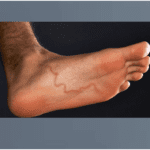When it comes to first aid and medical supplies, high-quality rigid tape is a must-have. But many people don’t know what this product can do, or why they need it in their homes. In fact, if you’re like most people, you may not have even heard of rigid tape before. That’s why we’ve written this guide for you.
We highly recommend that everyone have this advanced medical tape roll in their home at all times for its many benefits and uses.
What is Rigid tape? How is it different from Kinesio tape?
Rigid tape is a type of tape that is used for sports and injuries. It is made of a robust rayon-cotton blend with rubber zinc-oxide adhesive. It is especially useful as support during high-impact physical activities such as sports and exercising at the gym (such as weight lifting and resistance training). It is commonly mistaken for Kinesio tape which has almost the same uses, but different in which parts of the body they are used in.

Rigid tape is mainly used for ankles and shoulders for extra support, while Kinesio tape is for muscles and joints. But it doesn’t mean that rigid tape doesn’t have other uses.
Rigid tape can be used to secure fractures.
It is particularly useful in securing fractures that are hard to reach or have multiple points of fixation. The tape also helps to prevent further movement of the fracture and provides stability during healing. It’s flexible enough that it won’t cut off circulation but strong enough to keep bones in place as they heal.
It can be used for sprains, strains, and dislocations.
The tape is used to support the injured tissue while it heals and helps to hold the bones in place during an injury, as well as stabilize and support joints that are out of alignment. It is also used for sports injuries, such as sprains and strains.
You can use this type of tape on any part of your body, but it’s especially useful if you need to support a multi-point joint. You can also use rigid tape to support weak ligaments before and after injury or surgery.
It is used for spinal compression fractures.
Rigid tape is also used to compress fractured vertebrae in order to prevent further damage to surrounding tissue and nerves. This type of tape also works well on stable fractures because it helps reduce swelling and pain by providing support and stability around the area that was injured.
Rigid tape is used for compression fractures in the spine because it does not have any elasticity. It can also be used to treat vertebral compression fractures (VCFs), which are caused by osteoporosis or trauma to the vertebrae.
It is used for patellar realignment and thumb splinting.
Rigid tape is used for patellar realignment and thumb splinting. Patellar realignment is a simple technique that allows you to realign your kneecap without the need for surgery. It’s commonly done by physical therapists after knee injuries such as ACL injuries or meniscus tears.
Rigid tape also is often used to splint the thumb after fractures or sprains. This helps keep the thumb in place while it heals so it doesn’t bend back on itself and cause further pain or damage.
It has beneficial effects on posture control.
Rigid tape is used by athletes for posture control. Athletes have more control over their posture and are able to jump higher and do better hip flexion when they use rigid tape for training. Rigid tape also has beneficial effects on posture control and muscle stabilization during rehabilitation after surgery or injury.
This makes it especially useful for treating problems in postural deformities such as scoliosis and frozen shoulder syndrome (adhesive capsulitis).
Conclusion
Rigid tape is a must-have for athletes of all levels. You can use it to support any area injured on your body, including your shoulder, elbows, or knees. Plus, it’s very easy to apply and remove.
On the whole, rigid tape has many positive qualities that make it a reliable and valuable tool for both athletes and gym-goers alike. If you do a lot of lifting, jumping, or other exercises involving a lot of your body’s major muscles and joints, you should consider some rigid tape to help reduce the chances of injury.
It also has great uses in recovery and healing. It is used by medical professionals and common people alike for different purposes.


